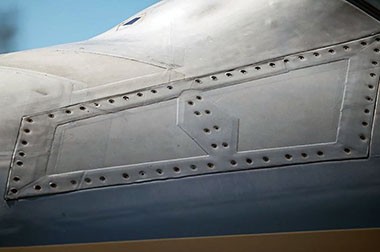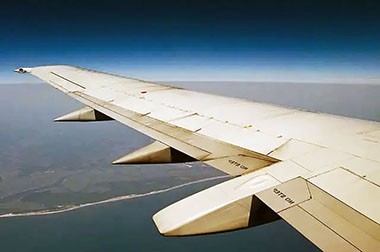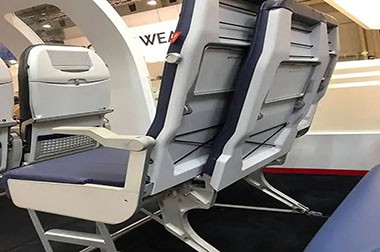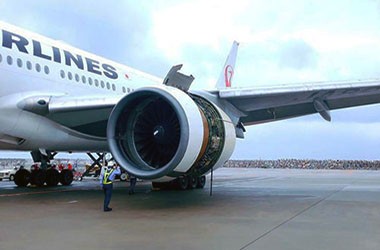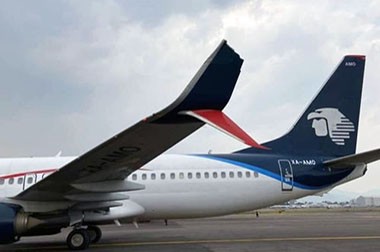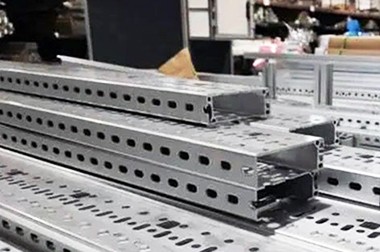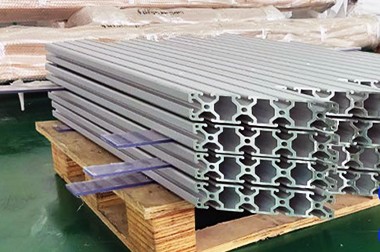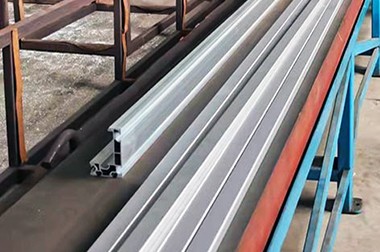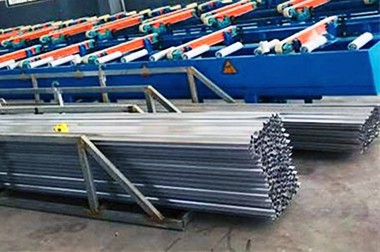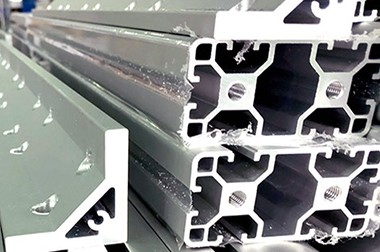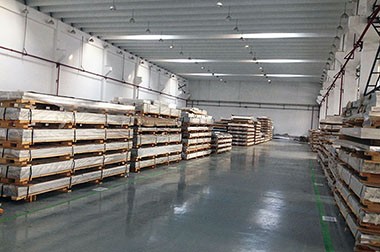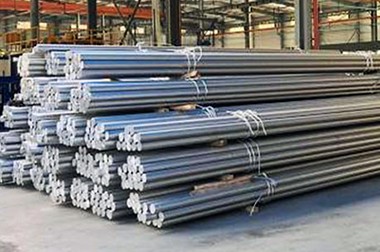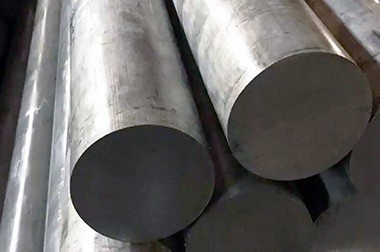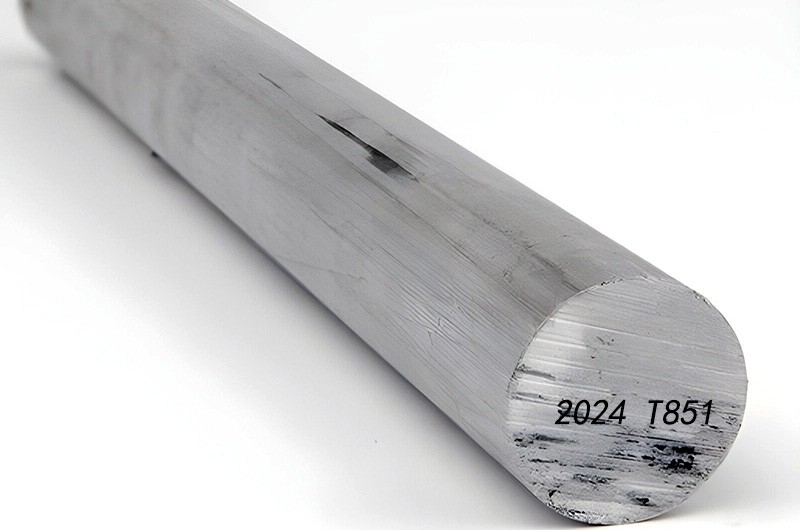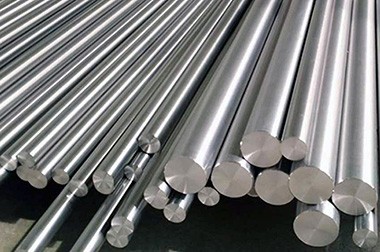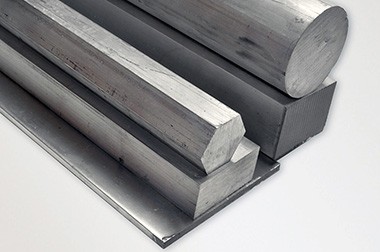2024 Aerospace Aluminum Extrusion
2024 aluminum extrusions are known for their high strength and good fatigue resistance, making them commonly used in aerospace applications. Their main characteristics include excellent tensile strength and relatively low corrosion resistance, which necessitates coatings or anodizing in some applications.
In terms of processing, 2024 aluminum is typically formed through hot extrusion, making it suitable for manufacturing complex-shaped profiles such as frames, brackets, and components. Additionally, its weldability is generally poor, and mechanical connections are often preferred.
2024 requires solution heat treatment to achieve optimal performance, particularly for applications needing high strength-to-weight ratios and good fatigue resistance. It can only be welded using friction welding and has average machinability. Due to its high strength and fatigue resistance, 2024 is widely used in aircraft structures, especially in tension-bearing wing and fuselage structures. 2024 is available in different temper states.
2024 Aluminum Extrusion Specifications
Currently Offering To The Following Specifications:
AMS-4152, AMS-4164, AMS-4165
ASTM-B221
Latest Designation: AMS-QQ-A-200/3
Other Specifications: ABS, ASNA, LN, Werkstoff, NTA, DAN, AIR
Haomei Aluminum stocks 2024, 6061, and 7075 aluminum extrusions. There are over 20, 000 shapes available, including solid and hollow profiles.
Chemical composition of Haomei 2024 aerospace aluminum alloy
| 2024 alloy chemical | |
| Chemical element | % Present |
| Si | 0.5 |
| Fe | 0.5 |
| Cu | 3.8-4.9 |
| Mn | 0.3-0.9 |
| Mg | 1.20-1.8 |
| Ti | 0.15 |
| Cr | 0.10 |
| Zn | 0.25 |
| Other (Each) | 0.0-0.05 |
| Aluminium (Al) | Balance |
Mechanical properties of Haomei 2024 aerospace high quality extrusion
| Temper | Tensile strength | Yeild strength | Elongation |
| T4 | 460 MPa | 220 MPa | 19 % |
| T351 | 460 MPa | 260 MPa | 19 % |
| T851 | 480 MPa | 450 MPa | 20 % |
Hot selling products of 2024 aluminum extrusion profiles
2024 Aluminum Square Tube
- Features: High strength-to-weight ratio, good machinability, and excellent fatigue resistance.
- Processing: Commonly fabricated through extrusion, cutting, and machining. Anodizing may be applied for improved corrosion resistance.
- Applications: Used in aircraft fuselage frames, support structures, and other components where weight reduction is crucial.
2024 Aluminum Oval Tube
- Features: Similar strength characteristics to square tubes but with improved aerodynamic properties due to its shape.
- Processing: Extruded into shape, can be welded or joined using mechanical fasteners.
- Applications: Ideal for airframe structures, wing supports, and other applications requiring reduced drag.
2024 Aluminum Flat Bar
- Features: Excellent strength and machinability, available in various thicknesses.
- Processing: Can be cut, drilled, and machined into various shapes; often treated with heat for enhanced properties.
- Applications: Used in aircraft flooring, brackets, and support frames.
2024 Aluminum Square Bar
- Features: High strength, good fatigue resistance, and machinability.
- Processing: Typically machined from larger blocks or extruded into shape.
- Applications: Utilized in aircraft components requiring high strength, such as landing gear and structural supports.
2024 Aluminum Hexagonal Bar
- Features: Offers similar strength properties as square bars, with a unique shape that aids in gripping.
- Processing: Machined from extruded forms or forged.
- Applications: Used in specialized fastening applications and custom aircraft components.
2024 Aluminum Angle
- Features: High strength, L-shaped cross-section provides good rigidity.
- Processing: Can be extruded, cut, and welded.
- Applications: Used for bracing, framing, and structural supports in aircraft assemblies.
2024 Aluminum T Bar
- Features: Strong and versatile, with a T-shaped cross-section that offers unique load distribution.
- Processing: Typically extruded and then cut to length.
- Applications: Employed in aircraft structural components and as reinforcement in various assemblies.
2024 Aluminum U Channel
- Features: Provides excellent structural support and rigidity.
- Processing: Commonly extruded, easily cut, and welded.
- Applications: Used in aircraft frames, fuselage sections, and support structures.
2024 Aluminum Rectangular Tube
- Features: High strength with a larger cross-section, providing excellent structural integrity.
- Processing: Typically extruded and available in various sizes; can be welded or fastened.
- Applications: Used in structural components, fuselage frames, and support structures in aircraft.
Applications of 2024 Aluminum Extrusions in Aerospace
2024 aluminum alloy profiles play a crucial role in aerospace due to their excellent mechanical properties and processing characteristics. Whether it’s structural support, weight control, or fatigue resistance, this material offers indispensable advantages that ensure the safety and performance of aircraft.
1. Fuselage Structure
The application of 2024 aluminum alloy profiles in fuselage frames and skins is vital. The fuselage structure needs to maintain strength while minimizing weight to improve fuel efficiency and flight performance.
Advantages of 2024 Aluminum Profiles
- High Strength: 2024 aluminum alloy has relatively high tensile and yield strength, capable of withstanding various stresses during flight and landing.
- Low Density: Lightweight design enhances load capacity and range while reducing fuel consumption.
Specific Applications of 2024 Aluminum Profiles
- Frames: Used for structural components such as fuselage longitudinal beams, cross beams, and ribs, forming the basic framework of the fuselage.
- Skins: The fuselage skin typically needs to be formed through extrusion, welding, etc. These profiles not only meet strength requirements but also reduce aerodynamic drag through optimized design.
2. Wing Design
Load-bearing components and stringers in wing structures are key parts that ensure the stability and safety of the wings during flight.
Advantages of 2024 Aluminum Profiles
- Fatigue Resistance: 2024 aluminum alloy effectively resists fatigue failure under continuous loading, extending the lifespan of the wings.
- Machinability: Profiles can be machined into various complex shapes to meet different design requirements.
Specific Applications of 2024 Aluminum Profiles
- Main Spars and Ailerons: 2024 aluminum alloy profiles are used in the frames of main spars, ailerons, and lift devices, providing the necessary rigidity and strength.
- Stringers: Stringers are installed inside the wings to distribute loads and enhance overall stability.
3. Cargo Doors and Other Moving Parts
Cargo doors, elevators, and similar components need to be opened and closed frequently, so their materials must possess excellent fatigue resistance and strength.
Advantages of 2024 Aluminum Profiles
- High Fatigue Resistance: 2024 aluminum alloy exhibits excellent durability during frequent operations, reducing failure rates.
- Lightweight: Reducing the weight of moving parts enhances ease of operation.
Specific Applications of 2024 Aluminum Profiles
- Cargo Doors: Cargo doors made from 2024 aluminum alloy profiles can withstand external pressure and impact while maintaining a lightweight design.
- Elevators: The frame structure of the elevators is typically made of 2024 aluminum profiles to ensure their effectiveness and reliability in flight control.
4. Landing Gear
Landing gear is an important component of aircraft for takeoff and landing, requiring strong load-bearing capacity and shock absorption.
Advantages of 2024 Aluminum Profiles
- Strength and Toughness: The high strength characteristics of 2024 aluminum alloy profiles can withstand significant impact forces during landing, ensuring aircraft safety.
- Lightweight: Reducing the overall weight of the landing gear helps improve aircraft performance and reduce fuel consumption.
Specific Applications of 2024 Aluminum Profiles
- Main Landing Gear: Main landing gear made from 2024 aluminum profiles effectively supports the weight of the aircraft, especially during takeoff and landing.
- Support Components: Various support and connection components in the landing gear also commonly use 2024 aluminum alloy profiles, ensuring stability and durability during use.
2000 Series Aluminum Alloy Profile
| Aluminum Alloy Products | Applications |
| 2014 Aluminum Alloy Extrusion Profiles | 2014 aluminum alloy can be used in applications requiring high strength, high hardness, and high-temperature resistance, suitable for aerospace materials, forgings, thick plates, extrusion materials, wheels, structural components, spacecraft parts, first fuel tanks of multi-stage rockets, truck frames, suspension components, etc. |
| 2219 Aluminum Alloy Extrusion Profiles | 2219 aluminum alloy can be used for oxidizer tanks in space shuttles, skin and structural components of supersonic aircraft. It has a usage temperature range of -270 to 300°C, with good welding performance and high fracture toughness. In T8 condition, the alloy exhibits excellent resistance to stress corrosion cracking. |
| 2618 Aluminum Alloy Extrusion Profiles | 2618 aluminum alloy can be used to manufacture forgings and impact-forged components, as well as pistons and parts for aircraft engines. |
| 2A50 Aluminum Alloy Extrusion Profiles | 2A50 aluminum alloy is used to manufacture complex-shaped, high-strength components. |
| 2A70F Aluminum Alloy Extrusion Profiles | 2A70F aluminum alloy is used to manufacture aircraft skins, aircraft engines, pistons, guide wheels, and discs. |
You may also be interested in the following
-
2024 T4 Aircraft Aluminum Sheet Plate for Fuselage Skins
The 2024-T4 aluminum alloy used for the fuselage skin features high strength, good formability, and excellent plate shape and surface quality.
-
7150 7055 2024 Aluminum for Aircraft Wing Panel
7150, 7055, 2024 have high strength, high toughness, corrosion resistance and other properties, suitable for manufacturing wing skin wall panels, wing ribs and webs and other structural parts.
-
7055 2024 Aluminum Plate for Aircraft Seats
7055 and 2024 aluminum alloy profiles are commonly used materials for manufacturing aircraft seats and are widely used due to their excellent performance.
-
2024 Aerospace Aluminum for Engine Cowl Skins
2024 high-strength aluminum is used for engine cowling skins because of its strength-to-weight ratio and high-temperature resistance, providing protection and optimal airflow.
-
2024 7075 Aerospace Aluminum for Door Components
2024 and 7075 high-strength aluminum alloys are used in aircraft door components to ensure durability, deformation resistance, and safety.
-
2024, 7075, and 7475 Aerospace Aluminum for Wing Skins
2024, 7075, and 7475 combinations exhibit excellent strength and fatigue resistance, making them suitable for wing skins to withstand deformation under stress.
-
2024 7075 Aerospace Aluminum for Fuselage Frames
2024, 7075, and 7475 aluminum alloys are essential materials in aerospace engineering, particularly for fuselage frames. Their unique properties enable engineers to select the most appropriate alloy based on specific requirements for strength, weight, corrosion resistance, and fatigue performance.
-
2024 7050 7075 Aerospace Aluminum for Horizontal Tail Fittings
Alloys 2024, 7050, and 7075 provide the necessary strength and stiffness for horizontal tail components of aircraft, ensuring reliable control surface performance.

